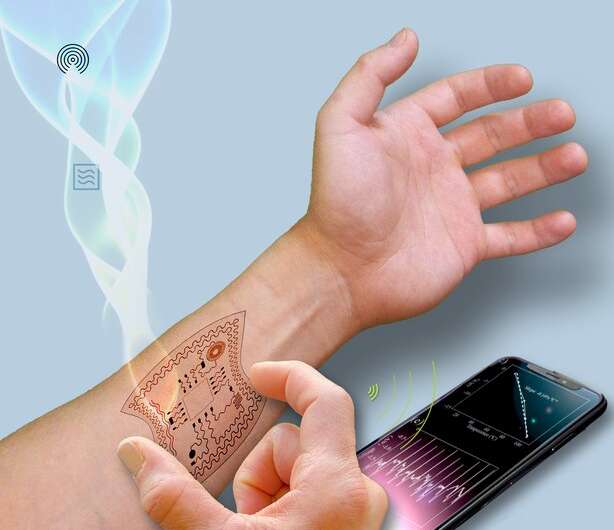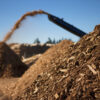From microwave ovens to Wi-Fi connections, the radio waves that permeate the environment are not just signals of energy consumed but are also sources of energy themselves. An international team of researchers, led by Huanyu “Larry” Cheng, Dorothy Quiggle Career Development Professor in the Penn State Department of Engineering Science and Mechanics, has developed a way to harvest energy from radio waves to power wearable devices.
The researchers recently published their method inMaterials Today Physics.
According to Cheng, current energy sources for wearable health-monitoring devices have their place in powering sensor devices, but each has its setbacks. Solar power, for example, can only harvest energy when exposed to the sun. A self-powered triboelectric device can only harvest energy when the body is in motion.
“We don’t want to replace any of these current power sources,” Cheng said. “We are trying to provide additional, consistent energy.”
The researchers developed a stretchable wideband dipole antenna system capable of wirelessly transmitting data that is collected from health-monitoring sensors. The system consists of two stretchable metal antennas integrated onto conductive graphene material with a metal coating. The wideband design of the system allows it to retain its frequency functions even when stretched, bent and twisted. This system is then connected to a stretchable rectifying circuit, creating a rectified antenna, or “rectenna,” capable of converting energy from electromagnetic waves into electricity. This electricity that can be used to power wireless devices or to charge energy storage devices, such as batteries and supercapacitors.
This rectenna can convert radio, or electromagnetic, waves from the ambient environment into energy to power the sensing modules on the device, which track temperature, hydration and pulse oxygen level. Compared to other sources, less energy is produced, but the system can generate power continuously—a significant advantage, according to Cheng.
“We are utilizing the energy that already surrounds us—radio waves are everywhere, all the time,” Cheng said. “If we don’t use this energy found in the ambient environment, it is simply wasted. We can harvest this energy and rectify it into power.”
Cheng said that this technology is a building block for him and his team. Combining it with their novel wireless transmissible data device will provide a critical component that will work with the team’s existing sensor modules.
“Our next steps will be exploring miniaturized versions of these circuits and working on developing the stretchability of the rectifier,” Cheng said. “This is a platform where we can easily combine and apply this technology with other modules that we have created in the past. It is easily extended or adapted for other applications, and we plan to explore those opportunities.”
Stretchable micro-supercapacitors to self-power wearable devices
More information:
Jia Zhu et al, Stretchable wideband dipole antennas and rectennas for RF energy harvesting, Materials Today Physics (2021). DOI: 10.1016/j.mtphys.2021.100377
Provided by
Pennsylvania State University
Citation:
Researchers harvest energy from radio waves to power wearable devices (2021, March 25)
retrieved 25 March 2021
from https://techxplore.com/news/2021-03-harvest-energy-radio-power-wearable.html
This document is subject to copyright. Apart from any fair dealing for the purpose of private study or research, no
part may be reproduced without the written permission. The content is provided for information purposes only.



